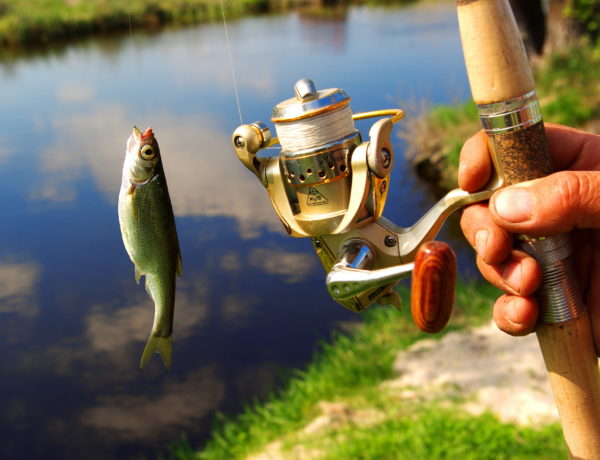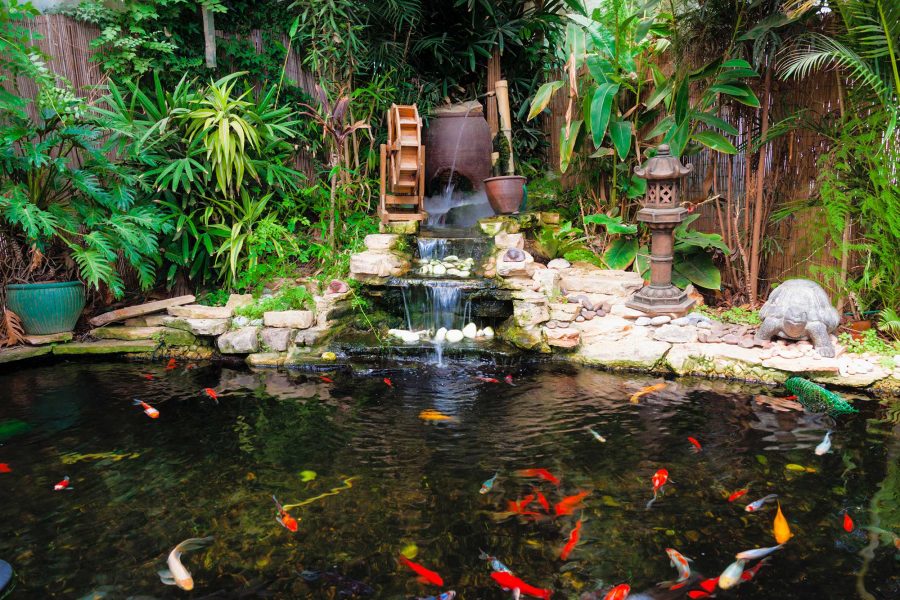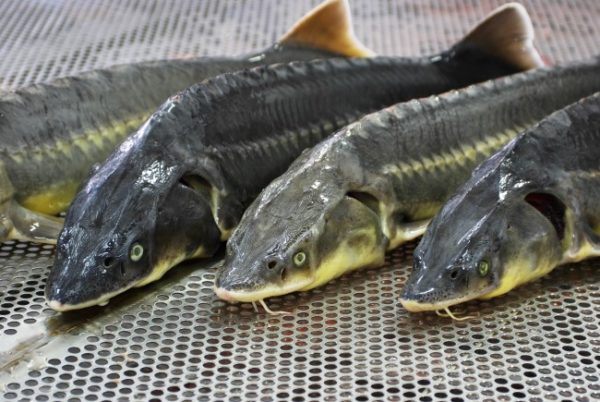 Any body of water is a complex ecosystem that lives according to natural laws. Therefore, before engaging in fish farming in artificial reservoirs as a business, you need to know what processes take place in the pond. Most fishing breeders are passionate about fishing. For them, having their own pond is not only a way to obtain additional farming, but also a cherished dream. Indeed, the first condition necessary to start such an enterprise is passion, passion, a great desire. After all, this is not the most profitable and quick payback type of business.
Any body of water is a complex ecosystem that lives according to natural laws. Therefore, before engaging in fish farming in artificial reservoirs as a business, you need to know what processes take place in the pond. Most fishing breeders are passionate about fishing. For them, having their own pond is not only a way to obtain additional farming, but also a cherished dream. Indeed, the first condition necessary to start such an enterprise is passion, passion, a great desire. After all, this is not the most profitable and quick payback type of business.
Content
Breeding fish in artificial ponds as a business step by step instruction
You need to start from the pond itself. If you looked after an already existing body of water, then you need to do a water analysis, study the ecosystem, ask what kind of fish it lives in. All natural or previously created water bodies belong, in the first case, to the state (federal, municipal property).
 Either this is a private pond, it may be the property of the owner or is on lease. In the case of a state facility, it is necessary to go through an agreement, obtain permits from the "Federal Agency for Water Resources", then contact the local municipal authorities. Permits are issued for 49 years, in the form of a lease for this period.
Either this is a private pond, it may be the property of the owner or is on lease. In the case of a state facility, it is necessary to go through an agreement, obtain permits from the "Federal Agency for Water Resources", then contact the local municipal authorities. Permits are issued for 49 years, in the form of a lease for this period.
The best option for starting a fish breeding business is your own pond. To do this, you can purchase land or use your own plot. The state willingly goes on sale or even free transfer of undeveloped land. When you create your own pond, launch a fish, you yourself create the environment that you need. Therefore, the risk factor decreases. It is necessary that the created reservoir naturally fits in and adapts to the natural ecosystem.
What places are chosen for the pond, the first stage
The right place is part of the successful implementation of the business plan.
To do this, choose:
- natural relief areas with existing lowlands: beams, ravines;
- the territory where groundwater lies close, they will fill the pond with water;
- various kinds of dams, a branch of rivers that can be blocked by a dam;
- places where keys, sources beat.
When using natural relief lowlands, it is enough to expand or deepen the site, create an insulating layer at the bottom so that the water does not leave.
Where underground water lies close enough to dig a pit, water from the ground will fill it.
Dams must be blocked by a dam to ensure water retention.
Places with underground sources, streams are considered the most successful option. They are blocked by a dam. Sources are regular suppliers of fresh water, it is being updated.
Excavation, bottom, coast
Before proceeding to the device of the reservoir, it is necessary to decide which fish you plan to breed.
The most popular among breeders are carp and trout. For carp, optimal sizes are from 30 to 50 sq.m. and a depth of 1.5 to 2 meters. The shallow depth is explained by the fact that the optimum temperature for the carp, when it grows and develops well, ranges from +24 to 26 degrees. It is achieved when the sun warms just such a depth.

For breeding trout and sturgeon, reservoirs at underground sources are most suitable, which will provide constant access to cold clean water.These breeds prefer oxygen-rich cool water. Temperature conditions for a comfortable stay from + 16 to 19 degrees. The depth of the reservoir should be greater than 2.5 to 3 meters.
Strengthening the bottom and shores
So that the water does not leave, and the banks do not crumble, they need to be strengthened. There are several ways to do this.
Film
After digging a pit, small excavators are most often used for these purposes, they compact the earth. Then they solder together a special film, and cover it with the bottom, fixing it on the coastal line. This method is suitable if the pond is artificially filled with water or during rains, spring floods. It is necessary to make a mechanism for lowering water for periodic cleaning, updating and catching fish. The edges of the film are fixed on the shore. For these purposes, special grooves are built in which the edges are laid, and then covered with earth. Top pressed savage stones. I plant coastal plants.
Clay
It is a good insulator, but not in flowing water. In them, clay may gradually erode. After the excavation is dug, the earth is tamped, geotextiles are laid, as a basis, and the bottom is lined with clay. The edges of the geotextile are fixed on the coastal line, as well as the film.
Bottom concreting
This is a reliable, but time consuming and quite expensive way. For concreting reservoirs, special technology is used.
Sand, geotextiles
This method is suitable for breeding sturgeon and trout, as it provides good filtration of water. After they dug a pit and rammed the earth, a layer of sand is poured. Then geotextiles are put to the bottom, the edges are fixed in the coastal line. Top up with another layer of sand. You can add some clay to the first layer of sand.
It is desirable that all artificial water bodies be equipped with a water drainage system.
Methods of fish farming in ponds
About breeding fish in artificial reservoirs, as a business, many video clips have been shot. After reviewing them, you will see that there are different methods of cultivation. They are divided into two categories: intensive and extensive technique. The latter involves breeding fish by casting the fry, and its gradual growth in vivo. The main focus for profit in this case is paid fishing. Sufficiently large bodies of water are suitable for these purposes.
Intensive way
More professional, the basis of income is commodity fish. Active feeding of fish is meant to make it grow better. This technique is divided into cultivation methods.
Namely:
A technology that is considered traditional, with a system of ponds for fish of different ages and transplanting it as it grows and ripens. Fry pond is intended for growing fry. Outgrowths for growing fish. Feeding ponds are used for intensive feeding of fish intended for sale. In wintering, respectively, spend the winter. They breed it in spawning ponds. Such a process is possible only if there is water circulation, the pond is artificially enriched with oxygen. Measures are taken to prevent the flowering of water (liming). A rather laborious way, in addition, natural losses of the livestock occur when transferring fish from one reservoir to another.
A simpler technique is when fry are raised in one pond for several years, fed, then caught and sold.
 Optimal and highly profitable technology is considered using pools and cages. This is an industrial aqua farm that requires certain equipment not only for cleaning and oxygenation, but also for heating. By this technique, different breeds can be grown.For example, in the warm months of carp, in winter sturgeon, trout.
Optimal and highly profitable technology is considered using pools and cages. This is an industrial aqua farm that requires certain equipment not only for cleaning and oxygenation, but also for heating. By this technique, different breeds can be grown.For example, in the warm months of carp, in winter sturgeon, trout.
The set of equipment for each method is different. Basic are oxygen supply systems so that fish do not suffocate, feeding troughs. For large volumes use special pumps that circulate water.
Business profitability
In order to study fish farming in artificial reservoirs as a business, to understand whether it is beneficial or not, it is necessary to start from a few points. The size of the pond, the method of growing, and the type of fish that are bred are important.

A significant factor is additional earnings:
- Sale and breeding of fertilized eggs, fry. It is necessary to pay attention to the fact that trout in ponds do not breed naturally. Caviar is fertilized with the milk of males, and kept in special nurseries.
- Parallel breeding of crayfish. They are also cleaners who eat up the remaining food.
- Providing conditions for paid fishing.
- Additional processing, conservation, smoking. In our country, dried fish is in demand.
Payback depends on the invested funds, volumes, used technologies. On average, this is at least one growing cycle. It takes from 2 to 4 years. Profitability is also a controversial issue. If you use additional earnings, then it can be 30%. Revenue directly from sales ranges around 15%.
Fish farming in artificial reservoirs as a business, and reviews about it are different. Some say that it is quite difficult and troublesome. And those for whom this is not only a business, but also a favorite hobby is delighted. Especially when everything turns out, the business brings a steady income. You just need to try to become a professional, and be enthusiastic about the business.




 Breeding fish in artificial ponds as a business
Breeding fish in artificial ponds as a business